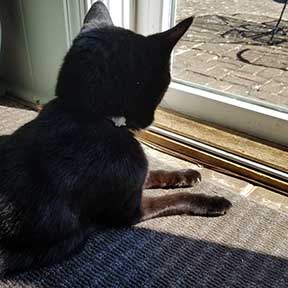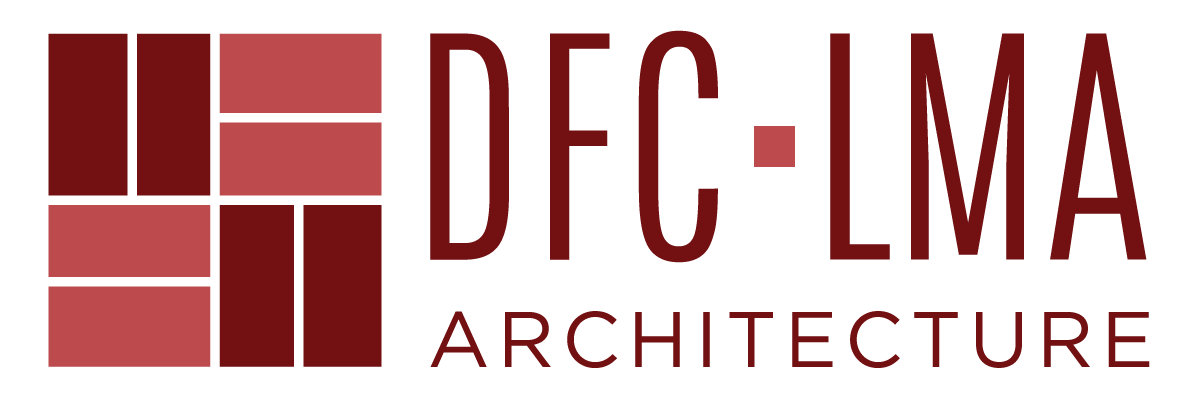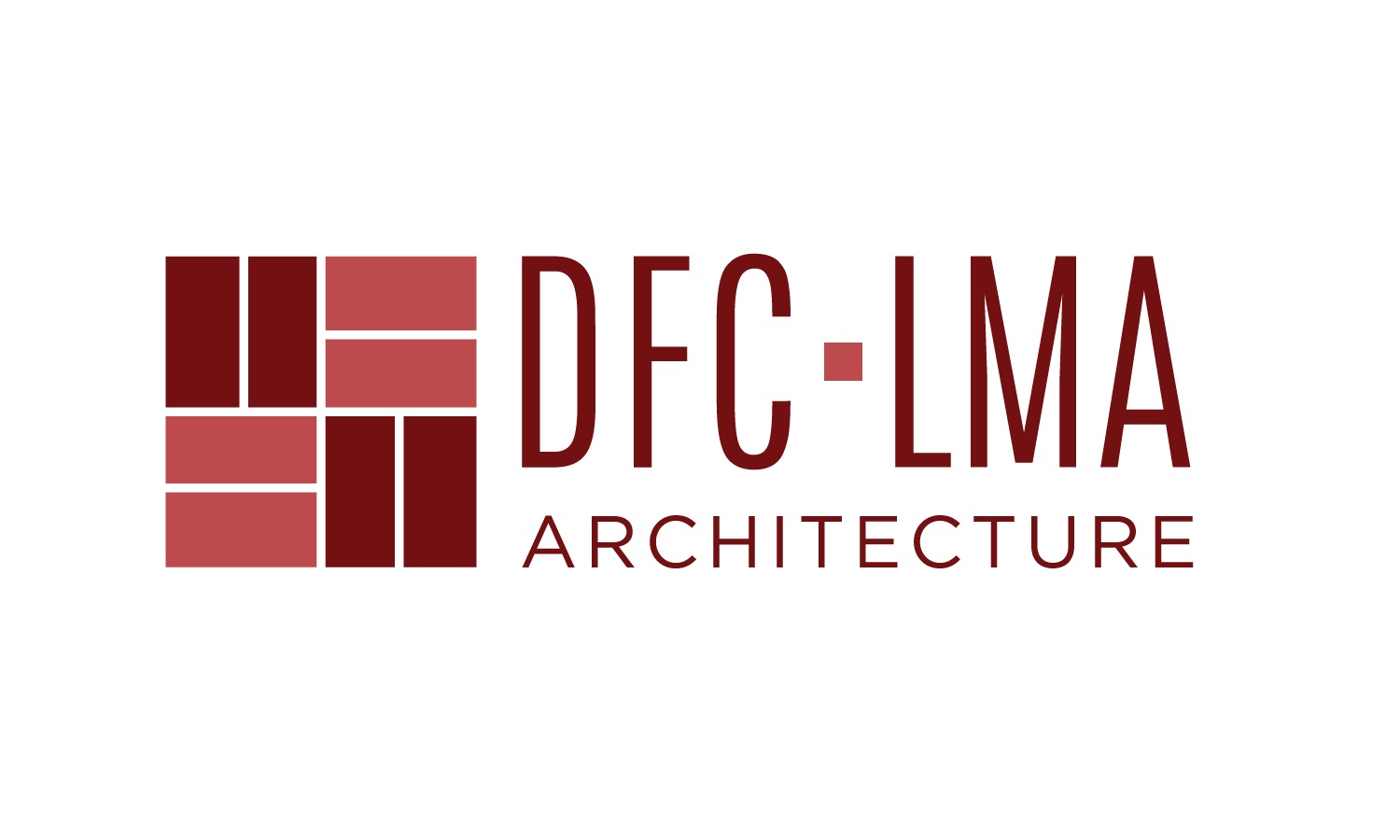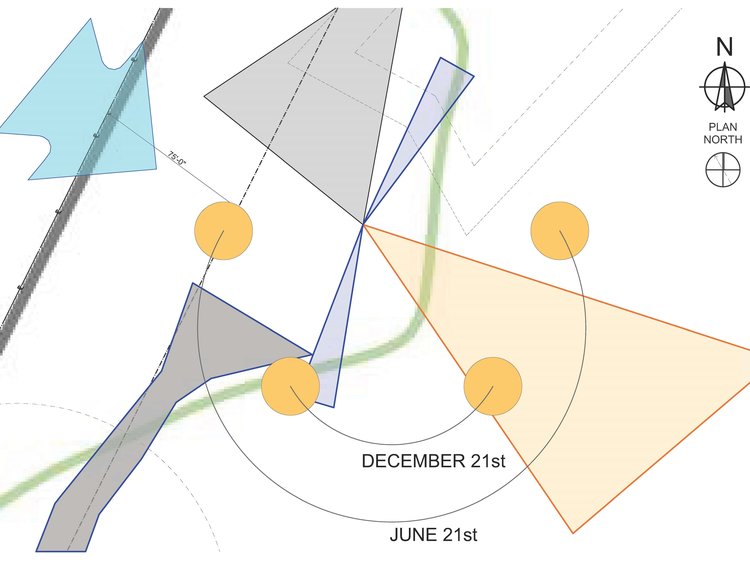Here comes the sun
While I sit here writing this entry about sun patterns, the morning sun is beaming into my office windows with welcome warmth on a blustery late-winter day. It’s days like this I am grateful my office windows face east to jump-start the warming of my small space and give my own circadian rhythm an extra boost.
Why Are Sun Patterns Important?
Studying sun patterns and the impact the sun will have on a home, house addition or business is critically important to how the owner will use a space. A sun pattern lay-over is one of the first steps of investigation I start with every project (just after I research jurisdiction requirements to make sure the project is possible).
The easiest example to think about how sunlight impacts a house is in the use of a porch or sunroom. Knowing how the sun moves around our space, we can think of what times of day or even the times of year to use various spaces. Imagine your favorite porch — what time of day and/or year do you enjoy sitting on it? In the winter, a south-facing porch would be welcoming and warm, but in the summer, it would be over-heated. In the summer, a north-facing porch stays mild throughout the day because it is never impacted by direct sun. A sunroom facing east, like my home office, warms in the morning but cools off later in the day. This warmth is welcome in the winter, but in the summer I have to remember to pull shades early in the morning to block the sun and not over-heat my space. Some of my clients have a strong preference for morning sun in their kitchen to help them wake up or for afternoon sun to be controlled in their dining room so the glare doesn’t interrupt dinner.
In addition to thoughtful room placement, the smiles of our sun patterns on a drawing tell us how we can control it. If we don’t want the big southern summer sun shining into the family room in the summer, we need an overhang outside (such as a porch) to shade the sun. To control eastern and western light, because it is so low on the horizon (imagine the sun rising or setting), we need vertical shading from blinds or curtains. Sometimes, we see vertical fins outside the house to shade this dramatic sun angle in the form of pergolas or trellis.
What Are Sun Patterns?
Sun-studies start by orienting the image of the site with north “up” at the top of the page (or as close as we can get it). This helps us to easily recognize how the sun rises in the east (right side of the page) and sets in the west (left side), creating a smiley face. The smile is the movement of the sun through the day over the house. The bigger smile is labeled June 21st — the longest day of the year. The smaller smile is the shortest day of the year, December 21st. The gaps between the start and finish of these two smiles are the spring and fall sunrises and sunsets. We see from these paths that the south exposure always gets sun, no matter the time of year and that the north never gets direct sun.
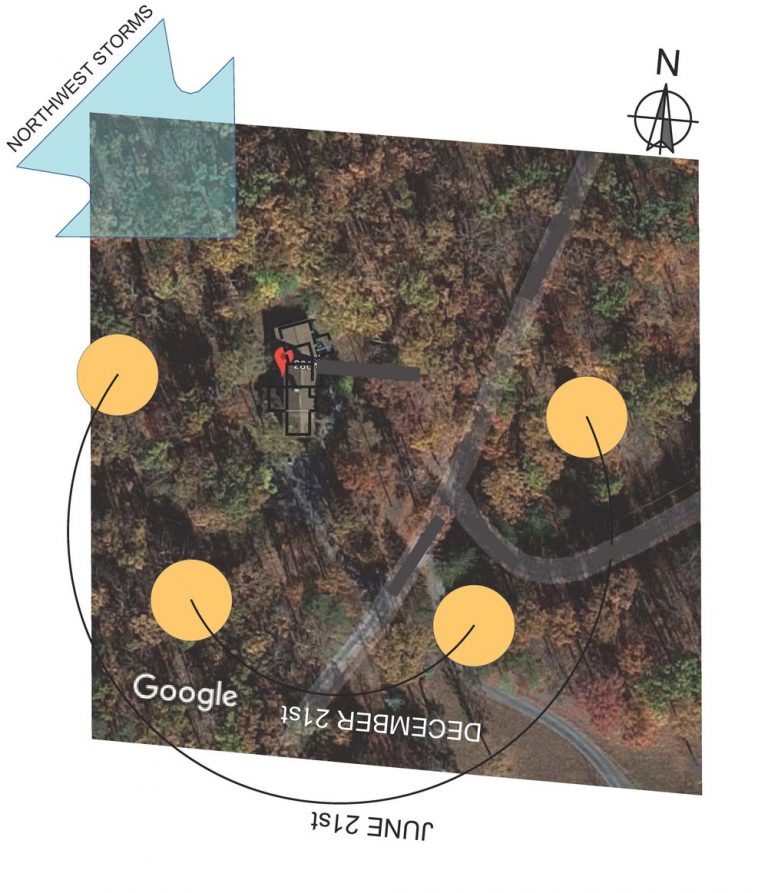
What Do Sun Patterns Tell Us?
Looking at the above drawing, we see that our proposed addition (a small laundry room on the top right), will get the most direct light in the mornings in the summertime. Looking at the study below, we see our addition (square family room at the top of the page) will get morning light but will be shaded by the house in the afternoon, helping to keep it cool. This is important to know because as a family room for large gatherings, it will be primarily used in the afternoons and evenings.

My Process With Sun Patterns
Knowing this, when I begin a new house design, I start with the sun angles and northwestern (winter) storms (and views — the colored triangles in the example at the top of the page are different views around the property). In the site study above, the client wanted morning sun in her bedroom and the kitchen and a cool family room. Knowing this, we start programmatically with the kitchen to the east (or right side of the page) and the family room towards the north (or top of the page). When we studied plan options, this “ideal” layout wasn’t working, so we did tricks to the design to achieve what we wanted with the sun. Looking at the final layout and sun patterns below, we see that a generous front porch to the south shades the inside of the house to move the family room more central. A cool north patio overlooking a small pond proved a perfect outside get-away from the family room for hot summer days. In the kitchen, located on the west side of the house, we buffered this location from storms and afternoon glare with fewer windows and a mudroom. We also extended the kitchen beyond the front porch to “grab” some of the morning sunlight to the east. The master bedroom benefits from a nice balance of both eastern morning light and western afternoon sun. The interior of the home is protected from the most extreme sun angles — the low light of the morning and afternoon, while benefiting from southern exposure (warm in the winter and shaded in the summer) and lovely balanced non-direct northern light.
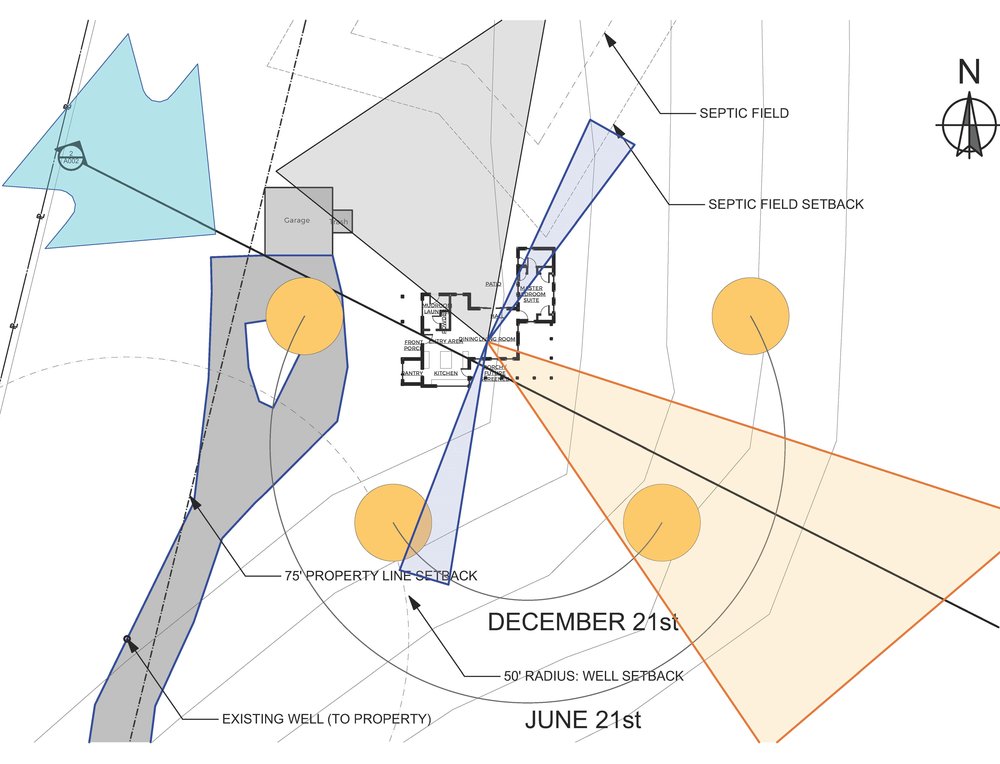
All of these steps I’ve described above are known as passive solar design techniques. These ideas require no mechanical or electrical systems to work to our advantage. Studying the sun angles can also inform how to create active solar options: possibilities for solar panels for electricity or tubes for hot water. Bringing this discussion to the table early on can help an owner get ideas for possibilities and pricing for active solar systems.
It is important to study the sun’s paths around a house or business to understand how best to use your spaces in conjunction with the sun’s rays outside. Everyone can enjoy the sun when we want it and understand how to control it when we do not. What is your favorite spot in the house to have sunlight at different times of the day?
